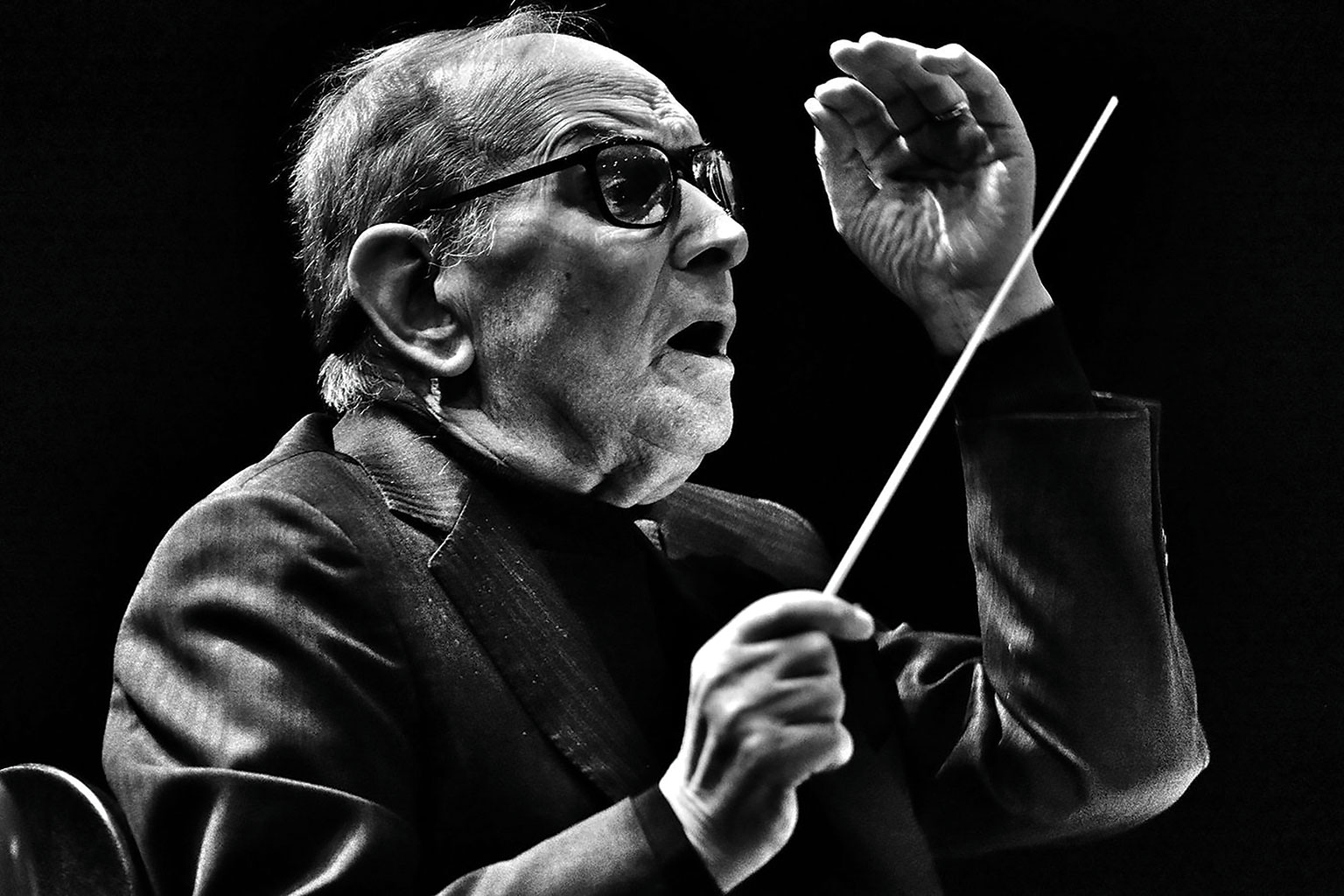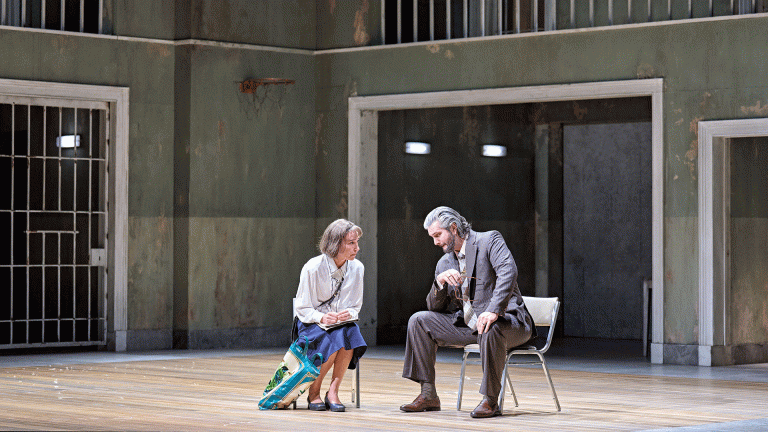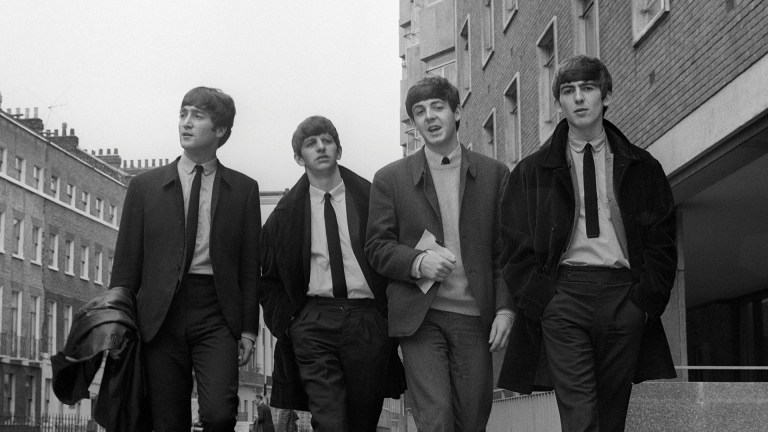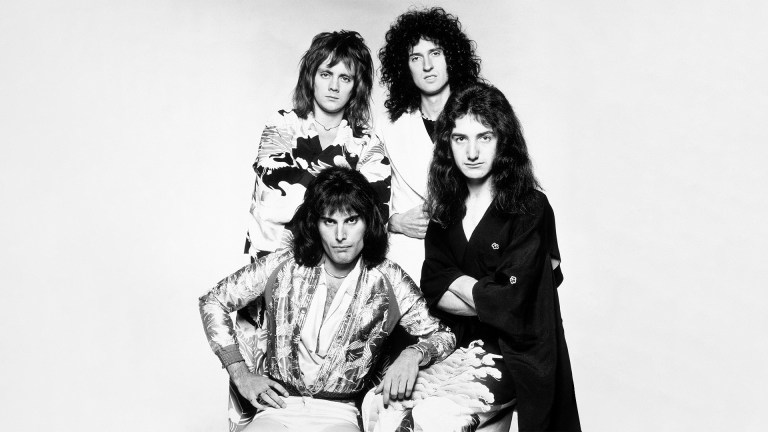Morricone began writing music at the tender age of six. Now in his forties, he would change the course of film music writing for ever with his audacity, cunning guile and wit and also providing an originality through experimentation, he would open up the landscape of the desert in a way we had never considered before.
The 1966 score for The Good, The Bad and The Ugly opens up with whistles and human voices mimicking instruments and builds into a ferocious orchestral choir and the image of horses and gunmen fire off before our eyes. As thrilling as any detective movie, Morricone bludgeons the senses right open and a new language beyond what we considered before is born.
Morricone became a genre to himself, intently recognisable in his particular solemnity (his personality, his humility and love) he was able to apply his incredible talent for nailing the emotion to the tree before shooting it, blowing it apart. The Good, The Bad and The Ugly is in itself, a masterclass of film scoring composition. It takes risks and excites and is not afraid to lead the senses, no doubt heralded by director Sergio Leone. (Directors often ask that you write ‘invisible music’ for a film.)
So here’s Morricone, leading the pack with his sense of the avant-garde neatly melded with his gut-wrenching sense of melody.
Of theme.
Advertising helps fund Big Issue’s mission to end poverty
The music is a simple motif that then is thrown slightly out by the adding of an ‘off-key’ note. This says everything about the film
If you are a fan, you will agree that we all have our own memories of what moves us about the way Morricone writes, and out of those 500 films he scored and countless TV shows, we will all come up with something different and even fans will say to you, “Oh, I don’t know that one!”
What sets him apart is that absolute detail to the melody and orchestration of that melody which enables the viewer/listener to connect to the film and the score and live in a 3D moment that is the very world.
Time and again Morricone, throughout the course of his brilliant life, found ways to express and comment and style the content that we will continue to see before us.
Of course he is rightly revered for his major score for spaghetti western films and for The Mission and The Untouchables.
I remember going to see a movie that starred Gary Oldman and Sean Penn called State of Grace. The movie begins with a parade in slow motion and the music is a simple motif that then is thrown slightly out by the adding of an ‘off-key’ note. This says everything about the film, as the music is already shaping the unconscious and making sense of the image. Then the credit, music by Ennio Morricone, appears. Would the film have been the same and imprinted itself on my psyche in the same way? Maybe.
Then there is U-Turn. Sean Penn again in a terrific modern-day noir movie scored by Morricone; again, would this film be as good? It’s rare that we actually think of the movie being dragged through the mud by the music, given its function to be sometimes the very thing that reminds you that what you are watching is ‘only a film’.
Advertising helps fund Big Issue’s mission to end poverty
The reason I cried?
Seeing perfection in something I was trying to just be good enough at doing myself, scoring movies and bowing in humility inside at the great man giving his knowledge away.
Witnessing in real time a man who understood every nuance of the genre… and let’s face it, Deborah’s Theme is as amazingly close to perfection as it gets.
Barry Adamson is a former Bad Seed and member of Magazine,now composer and filmmaker. Memento Mori (Anthology 1978-2018) is out now. barryadamson.com
@AdamsonBarry
Advertising helps fund Big Issue’s mission to end poverty









